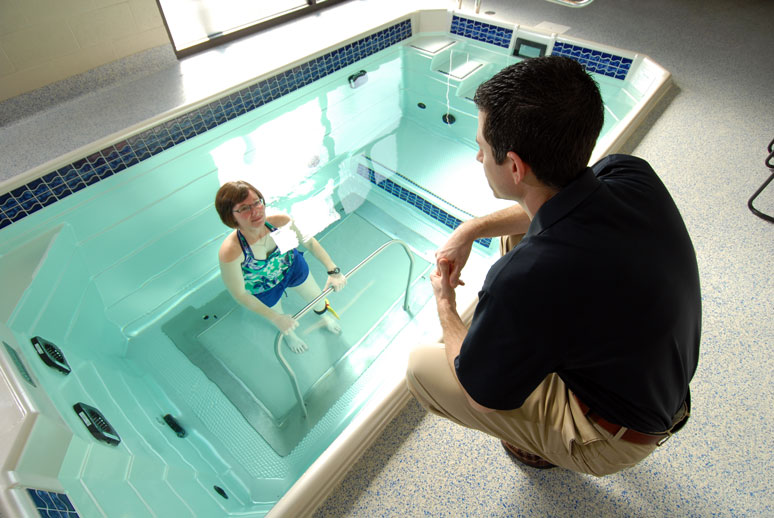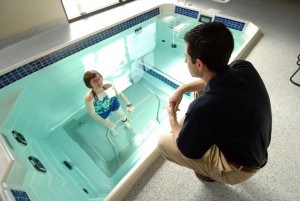Defining Your Aquatics Referral Sources for Success
Every physical therapy clinic owner understands that referrals are essential for a thriving aquatics program. Knowing this isn’t enough to encourage referrers to send patients your way. Instead, it takes forethought and planning to make it simple, convenient and rewarding for referral sources to put their trust – and their clients’ outcomes – in your hands.
This starts by knowing, or defining, the preferred referral sources.
As noted in a recent piece by Brian Howells, Director of Rehabilitation Services at Via Christi Therapy Clinic in Kansas:
“How could we succeed without our patients? The same holds true to the professionals who refer. Sometimes [aquatic therapy gives] hope to those who could never comfortably, securely or effectively rehab on land.”
Howells hits upon a key point in his discussion: In order to conveniently construct a list of referrers, why not start by determining the variety of populations who can utilize a therapy pool and other aquatics modalities?
Sample Target Audiences for Aquatic Therapy
It’s beyond the scope of this post to exhaustively discuss all the target audiences who could benefit from hydrotherapy and then match them with potential referring professionals. However, some are more easily defined than others. These include patients battling conditions such as:
Obesity
This is a serious condition that makes land-based training difficult and sometimes impossible. Obesity may not be the primary reason that a person comes to physical therapy, but as a comorbidity, it can limit land-based physical therapy effectiveness, causing a patient to stop rehab prematurely.
Referral sources for obese patients: ABOM (American Board of Obesity Medicine) clinicians, general physicians, bariatric surgeons, bariatric physicians, dietitians, nutritionists
Osteoarthritis
Not only is osteoarthritis painful, but it can lead to awkward movements, improper gait and a host of other not recommended (but understandable) coping mechanisms. It can also take a toll on the mind, leading to weight gain and a sedentary lifestyle. Aquatics in a warm water therapy pool can lead to a better quality of life.
Referral sources for patients suffering from osteoarthritis and similar issues: general physicians, orthopedic surgeons, rheumatologists, arthritis treatment specialists
Cardiac Conditions
Problems related to the heart may require surgical interventions followed by rehabilitation. In some cases, surgeons may also consider sending patients with comorbidities for prehab before surgery.
Referral sources for cardiac patients: general physicians, cardiologists, cardiovascular surgeons
Pulmonary Conditions
COPD and similar diseases are creating a new influx of patients to physical therapy clinics. Years ago, pulmonary conditions were not treated with aquatics. Now, more patients than ever are getting the pulmonary benefits of exercising in warm water pools and other water-based rehab modalities (as long as the water is kept on the cooler side.)
Referral sources for pulmonary patients: pulmonologists, asthma specialists, general practitioners, cardiologists, surgeons (depending upon the patient’s condition)
Pull Together Your Own Referral List Source & Then Start Marketing!
By beginning with your target populations and working backwards, you can explore all the potential referral sources available in your community, and quite possibly other surrounding areas without aquatic therapy options. Start a list of the types of referrers and determine how best to reach them.
Tools For Encouraging Referrers
Some of the best marketing tools that other aquatic therapy clinics have used to educate and encourage referrers (even busy ones) are:
- Open houses. You might be surprised at how excited your referral sources are to get into your warm-water therapy pool with underwater treadmill. Many may never have had the opportunity to try this type of modality before. By seeing and experiencing it, they will be less hesitant to resist aquatics for their patients.
- Office visits. Why not schedule a time to sit down with some of your referrers and discuss the rehab needs of their patient populations? A 15 or 20 minute visit can open the door to potential referrals.
- Satisfied patients. Your satisfied aquatics patients are terrific marketers for your therapy pool and related equipment! Make sure you talk to your patients and let them know you would appreciate their spreading the word to their physicians about your clinic.
No matter how you choose to get the word out, it’s time to get started and build those referrals. An aquatic therapy program can create a huge boost in your revenue and a concurrent reduction in missed appointments.
Ready to get started? We have developed a four-point tip sheet to give you a leg up on referrals. Learn what has worked for some clinic owners so you can benefit from others’ insights and successes. Click here for the download.



